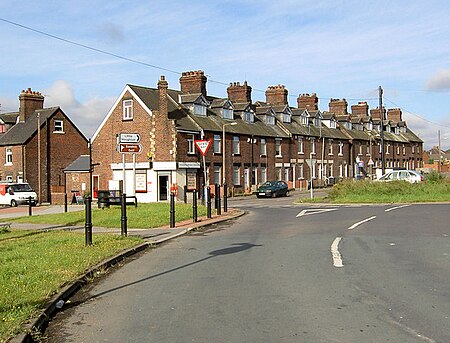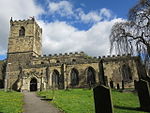Middlecliffe
Geography of the Metropolitan Borough of BarnsleyHamlets in South YorkshireSouth Yorkshire geography stubs

Middlecliffe is a small hamlet in South Yorkshire, England. It straddles the road between Darfield and Great Houghton, close to Barnsley, where Middlecliff Lane joins the B6273 road. The hamlet falls within the Darfield Ward of Barnsley MBC. It is mostly a collection of current and former council houses, small corner shop, a Working Mans Club and a sports ground. Middlecliffe is the birthplace of footballer Wilf Copping, who played for Leeds United, Arsenal and was capped 20 times for England.
Excerpt from the Wikipedia article Middlecliffe (License: CC BY-SA 3.0, Authors, Images).Middlecliffe
Middlecliffe Lane,
Geographical coordinates (GPS) Address Nearby Places Show on map
Geographical coordinates (GPS)
| Latitude | Longitude |
|---|---|
| N 53.541666666667 ° | E -1.35 ° |
Address
Middlecliffe Lane
Middlecliffe Lane
S72 0HW
England, United Kingdom
Open on Google Maps








